
Which plants to choose for landscaping an interior courtyard?
Selection of plants to create an easy-care green haven
Contents
Having an inner courtyard is a real privilege. Even if it’s not a proper garden to begin with, it can easily be transformed to accommodate numerous plants, allowing you to enjoy a natural and soothing atmosphere.
To achieve this, it’s essential to choose the right plants and follow some maintenance recommendations. The courtyard might be urban or rural, sunny or shaded, in a cool or dry climate… All these factors will influence your plant selection. Discover therefore all our advice in this article.
What are the constraints of an interior courtyard?
Having an inner courtyard is undoubtedly an asset. Much like a terrace, it allows you to enjoy an outdoor space and extend your living area, especially during fine weather. To design it and create a truly pleasant living nook, plants will be perfect allies. They offer multiple benefits. First and foremost, they are, of course, aesthetically pleasing. But they will also help bring coolness in summer, provide shade, or even shield you from prying eyes for added privacy.
However, inner courtyards have specific features to consider if you wish to grow plants there.
- Light may be limited. On one hand, depending on the exposure: a north- or east-facing courtyard will naturally receive less light than one facing south or west. But shade cast by walls, nearby buildings, or even trees can also block sunlight.
- Space is inevitably restricted. An inner courtyard remains a modestly sized area, which is why the chosen plants should not be too large—otherwise, you may struggle to move around or create varied zones (for dining, relaxing, children’s play, etc.).
- If the courtyard is in an urban setting, the plants will need to tolerate air pollution.
- There isn’t always available soil space. A concrete or paved courtyard won’t allow for planting directly in the ground. However, it’s entirely possible to opt for plants that thrive in pots. This includes naturally compact plants or dwarf varieties.
On the other hand, inner courtyards also offer advantages for growing certain plants:
- They are generally less exposed to cold, drying winds;
- Surrounded by walls, they retain a few extra degrees in winter, allowing you to grow slightly less hardy plants and enjoy earlier flowering;
- Maintenance time is naturally reduced.
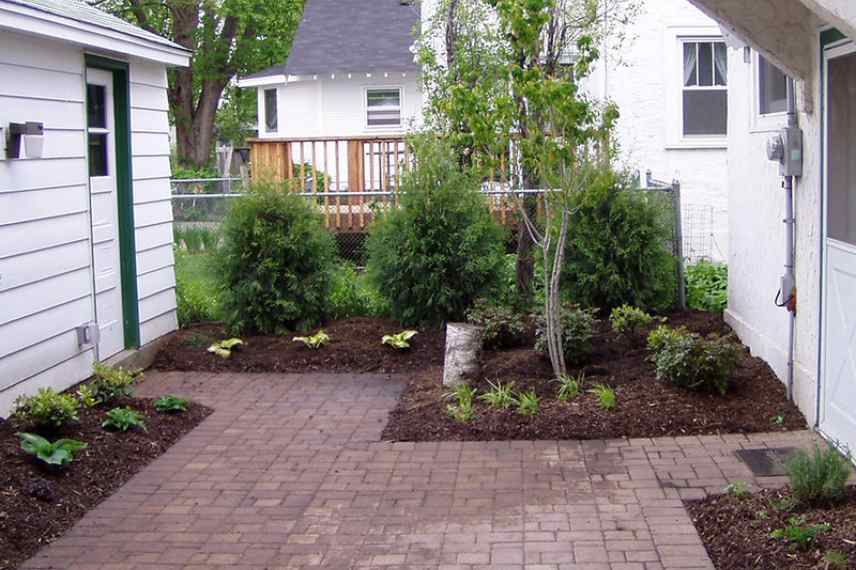
Limited soil, shade, and sometimes even overlooking neighbours: the patio or inner courtyard requires careful planning (@Field outdoor spaces)
A few precautions for growing plants in an inner courtyard
To help you choose plants for an interior courtyard, here are some tips:
- Observe your courtyard to determine its growing conditions: exposure, rainfall, wind penetration, etc. This is the foundation for selecting suitable plants that won’t struggle after a few months or require excessive maintenance. If plants are already growing in your courtyard, they’ll give you good clues about the site’s living conditions.
- Consider the atmosphere you want to create by greening your courtyard. Are you inspired by natural, Japanese-style, romantic, exotic, Mediterranean, contemporary, or formal French gardens? These influences will help you choose plants that create a harmonious look.
- We recommend selecting two to three dominant colours, incorporated in touches to create a cohesive design. If you’re unsure, opt for tonal variations (pinks, purples, yellows…) or complementary colours from the colour wheel (yellow and purple, blue and orange, red and green, etc.). Don’t overlook white flowering plants, which highlight other colours and add lightness.
- Make use of different levels in your courtyard, especially vertical space. This can be achieved with hanging baskets, climbing plants to cover walls or climb a pergola, trellises for pots and planters, etc. In a small space, this trick creates an impression of grandeur.
- Choose containers of adequate size so the soil dries out less quickly and watering doesn’t need to be too frequent: troughs, pots, tubs, planters, etc. If you enjoy DIY, repurpose materials you already have to create custom furniture, such as using pallets.
- For a long-lasting effect, mix evergreen foliage (which stays year-round) with deciduous foliage (which falls in autumn). Also stagger flowering periods by combining plants that bloom in spring, summer, autumn, or even winter. Similarly, blend perennial plants, which last for years, with annuals, allowing you to refresh the look if desired.
- Avoid very thorny plants. In a confined space, they make movement less pleasant and can more easily cause injuries.
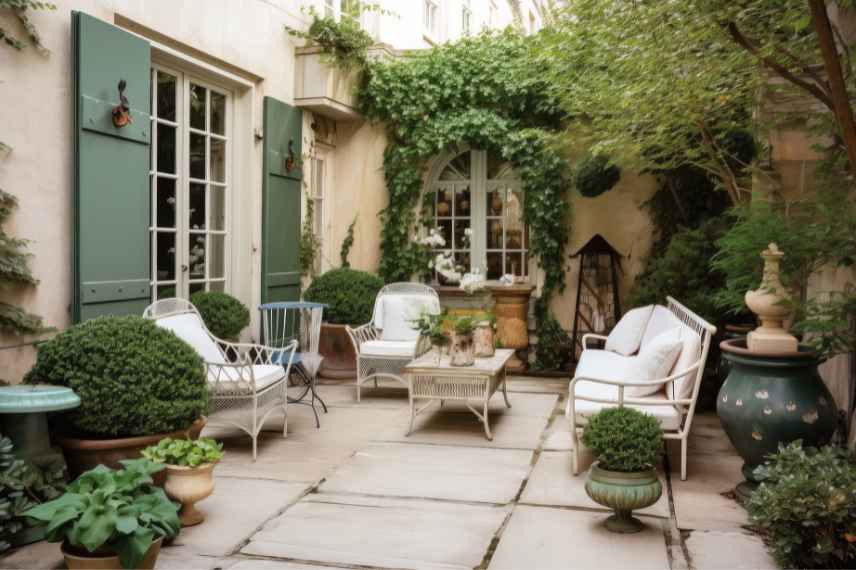
An interior courtyard can become a true haven by choosing climbers, small evergreen bushes and potted plants!
Plants to grow in a bright courtyard
If your courtyard enjoys several hours of sunlight each day, you’ll have plenty of options when it comes to choosing plants.
Here are a few examples:
- Mediterranean plants, especially if your summers are hot: lavender, rosemary, thyme, rockrose, lavender cotton, broom, curry plant, etc.
- Sun-loving bushes that are easy to grow: oleander, mimosa, butterfly bush, palm trees, Albizia, strawberry tree, oleaster, Mexican orange blossom, etc.
- Succulents and cacti.
- Rock garden plants: houseleeks, Sedum, etc.
- Ornamental grasses: blue fescue, Panicum, Stipa, Pennisetum, etc.
- Perennials that thrive in sunny spots and offer long-lasting blooms: blanket flowers, coneflowers, yarrows, purpletop vervain, agapanthus, alstroemerias, catmints, Gauras, hardy geraniums, etc.
- Climbing plants, such as roses, clematis, jasmines, trumpet vines, or compact wisterias.
- Conifers, such as junipers or small thujas.
- Spring bulbs, which can naturalise and return faithfully each year: daffodils, grape hyacinths, crocuses, etc.
You could even grow fruit trees that are as beautiful as they are delicious, such as the dwarf fig tree, columnar varieties (apple trees, cherry trees…) or climbing fruit trees (grapevines, kiwis…).
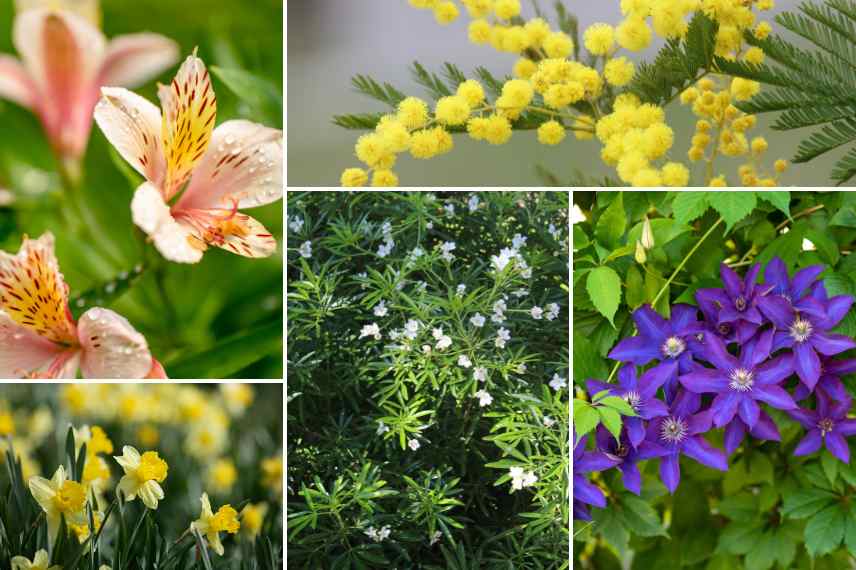
Alstroemeria, mimosa, daffodils, Mexican orange blossom (here the ‘Aztec Pearl’ variety) and clematis
Plants to grow in a shady courtyard
A shady location may limit your plant choices, but it won’t stop you from creating a beautiful and enjoyable courtyard.
Here are some plant ideas to consider:
- Climbing plants, such as ivy, Virginia creeper, honeysuckle, or Akebia…
- Ornamental grasses, like Carex or Ophiopogon (a perennial with grass-like appearance).
- Bushes, such as Sarcococca, Mahonia, Rhododendron, Skimmia, Pieris, Aucuba or bamboos (be sure to choose non-running varieties).
- Perennials: Hosta, ferns, heucheras, bergenias, Epimedium, Arums, hellebores, etc.
- Ground covers, like greater periwinkle or creeping euonymus.
- Bulbs: Cyclamen coum, snowdrops, snowflakes, etc.
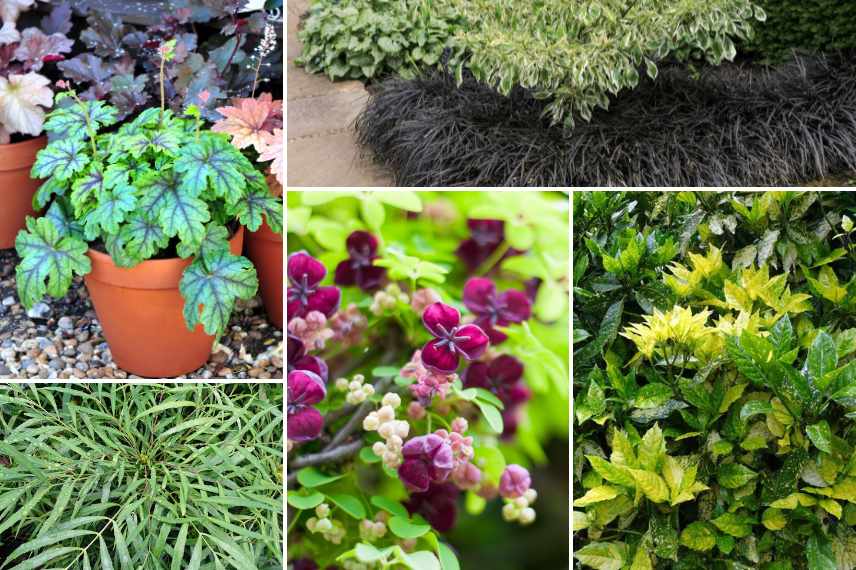
Heuchera, Cornus and Ophiopogon, Mahonia ‘Soft Caress’, Akebia quinata and Aucuba japonica
Making plant maintenance easier in an inner courtyard
Your goal is likely to have a well-planted courtyard that doesn’t require too much maintenance. This starts with choosing easy-going plants, like the ones we’ve suggested. But other tips will help make caring for your plants in a courtyard easier.
- Choose high-quality compost, which will retain water well and thus reduce the frequency of watering.
- If you’re growing exclusively in pots, remember to fertilise your plants regularly with suitable fertilisers. Nutrients in the substrate deplete more quickly than in open ground.
- If space allows, install a rainwater collector, which will make watering easier without needing to go indoors if there are no outdoor taps.
- Apply organic mulch at the base of your plants. It has a dual benefit: limiting the growth of adventives (“weeds”) and retaining soil moisture to reduce watering. For plants that love heat and dryness, opt for mineral mulch.
- Install ollas in pots for plants that prefer moist to damp soil. These irrigation pots hydrate plants gradually through capillary action. Acting as small water reservoirs, they again help space out watering. To learn more, check out our articles: “Ollas or Oyas: An Efficient and Economical Watering System” and “Making a Homemade Olla to Water the Garden”.
- If you really don’t want to spend time watering or during prolonged absences, opt for a drip irrigation system or porous hose. Paired with a timer, it will be almost self-sufficient. For more details, read our article: “How to Install Automatic Watering on a Balcony or Terrace?”.
→ Also explore our advice in the ABC of Container Planting.
- Subscribe!
- Contents
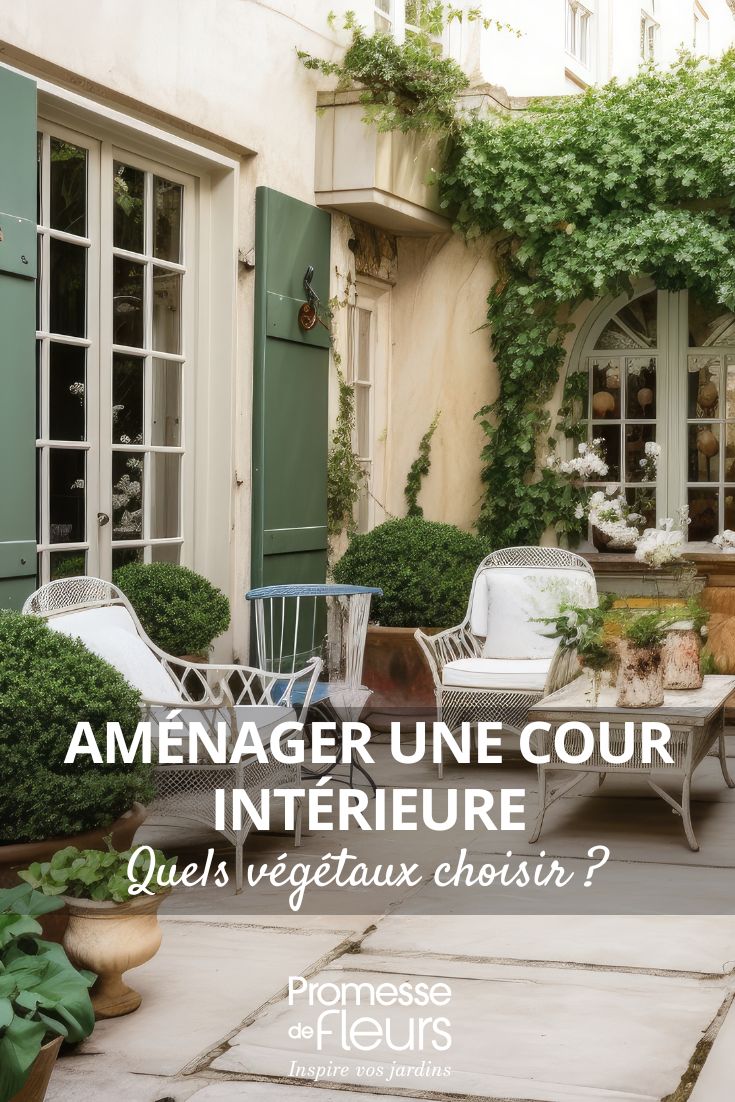































Comments